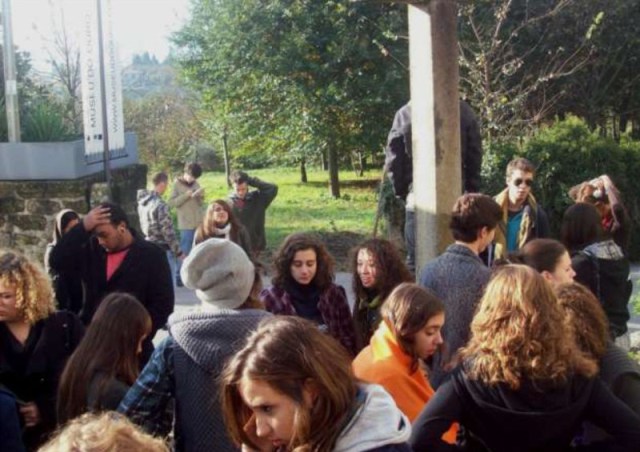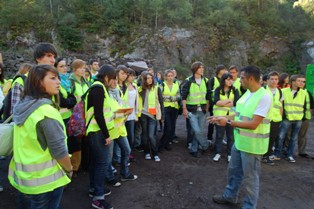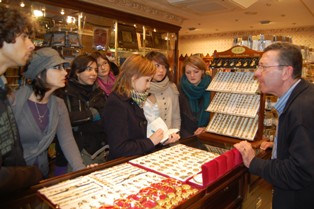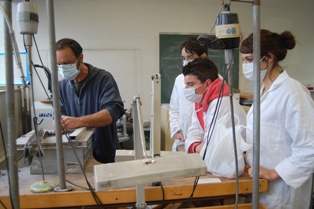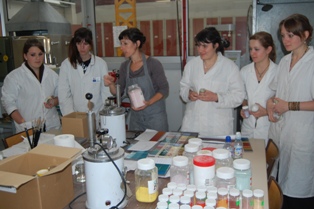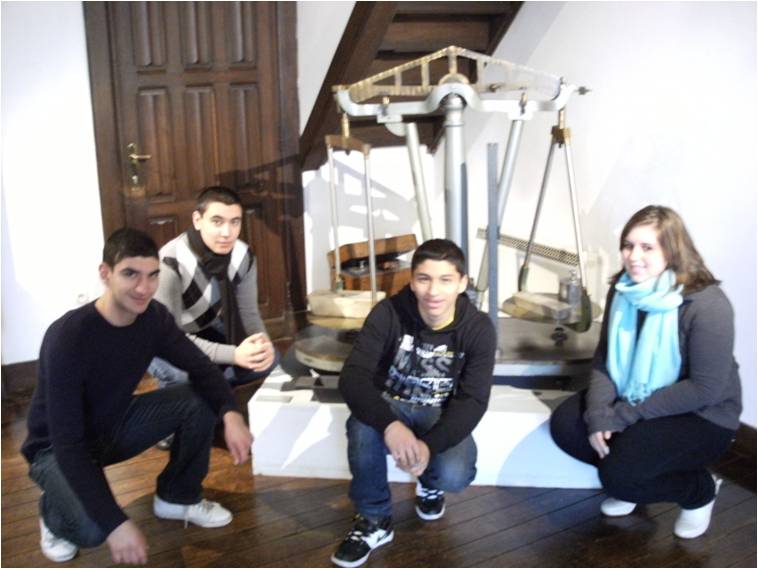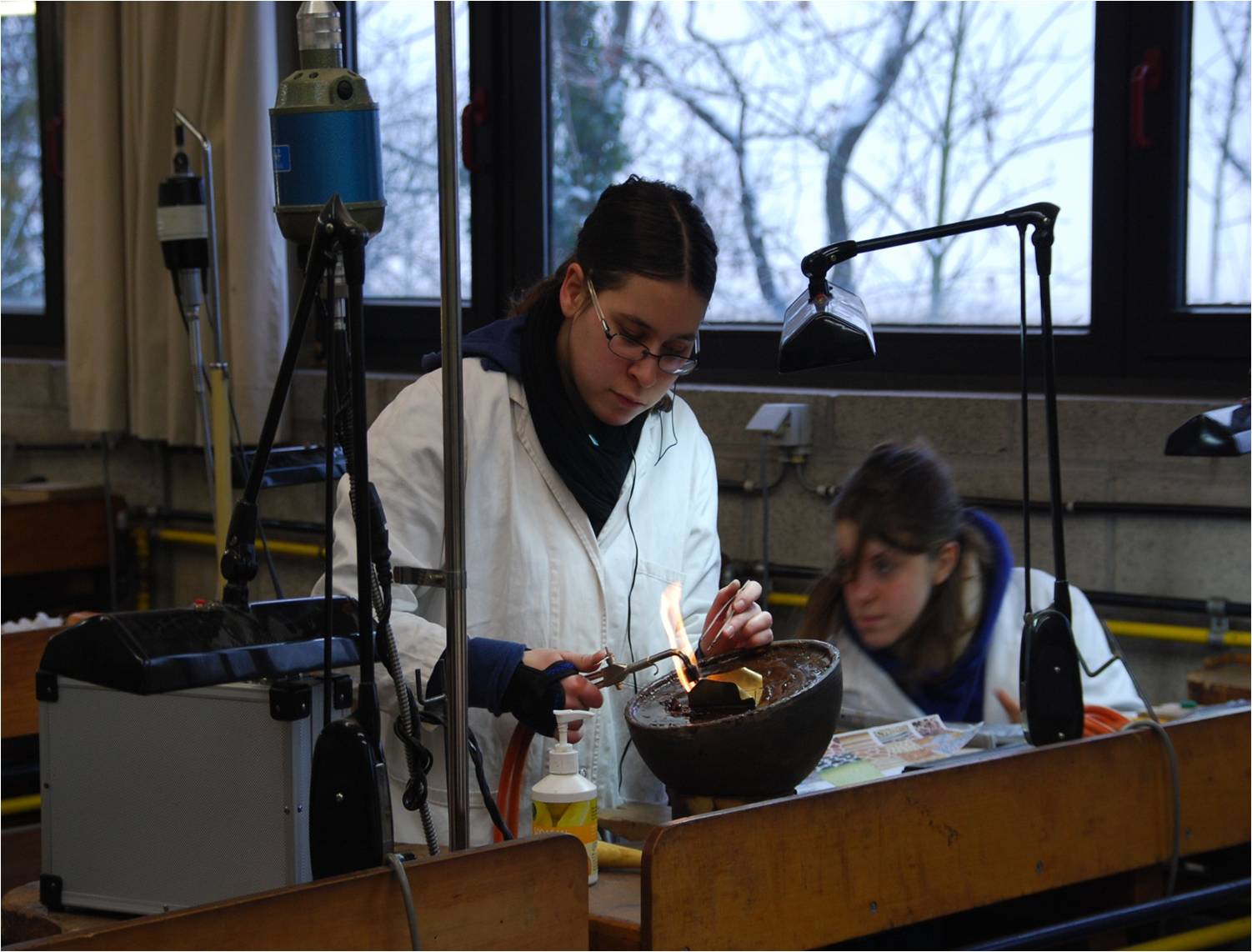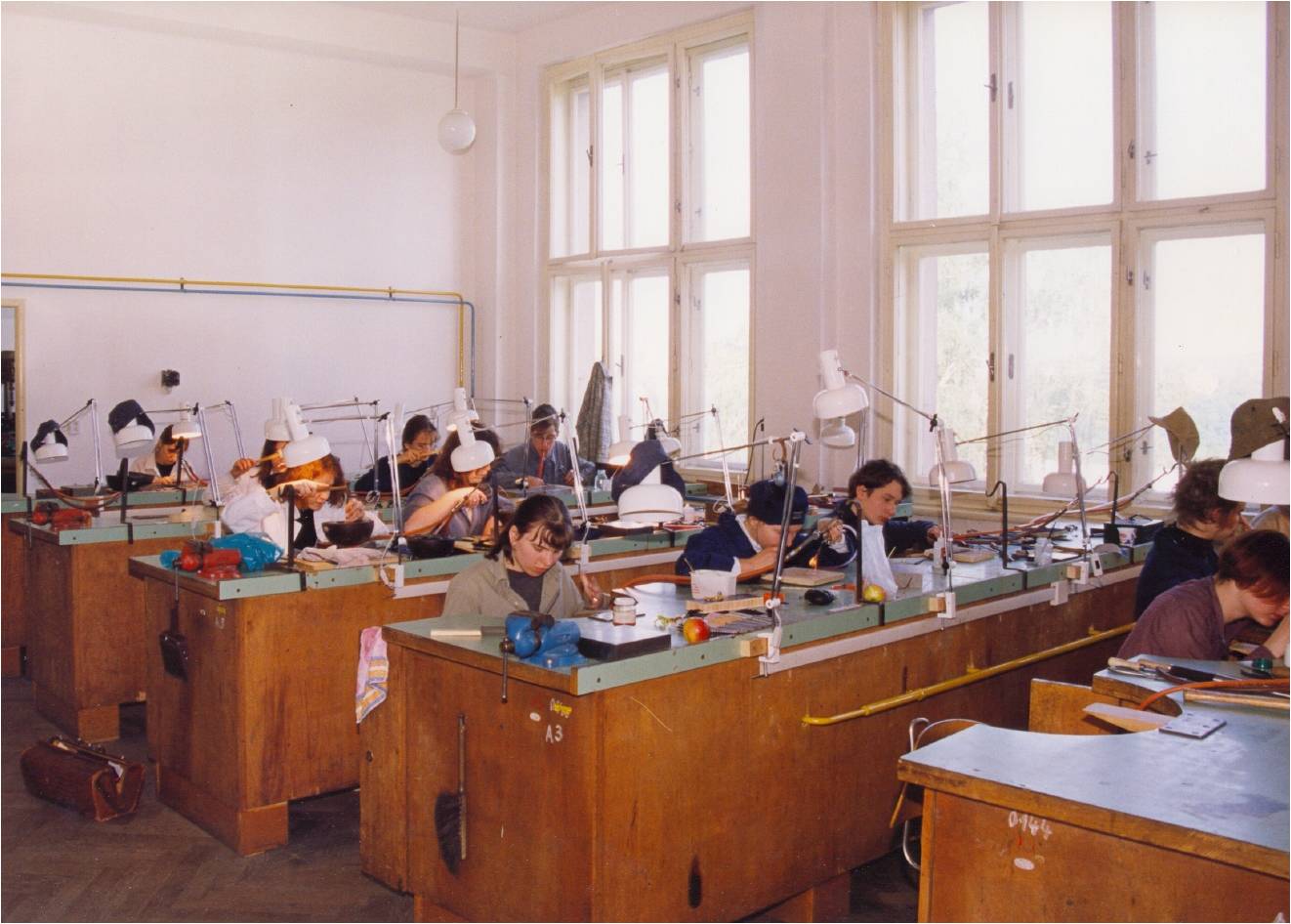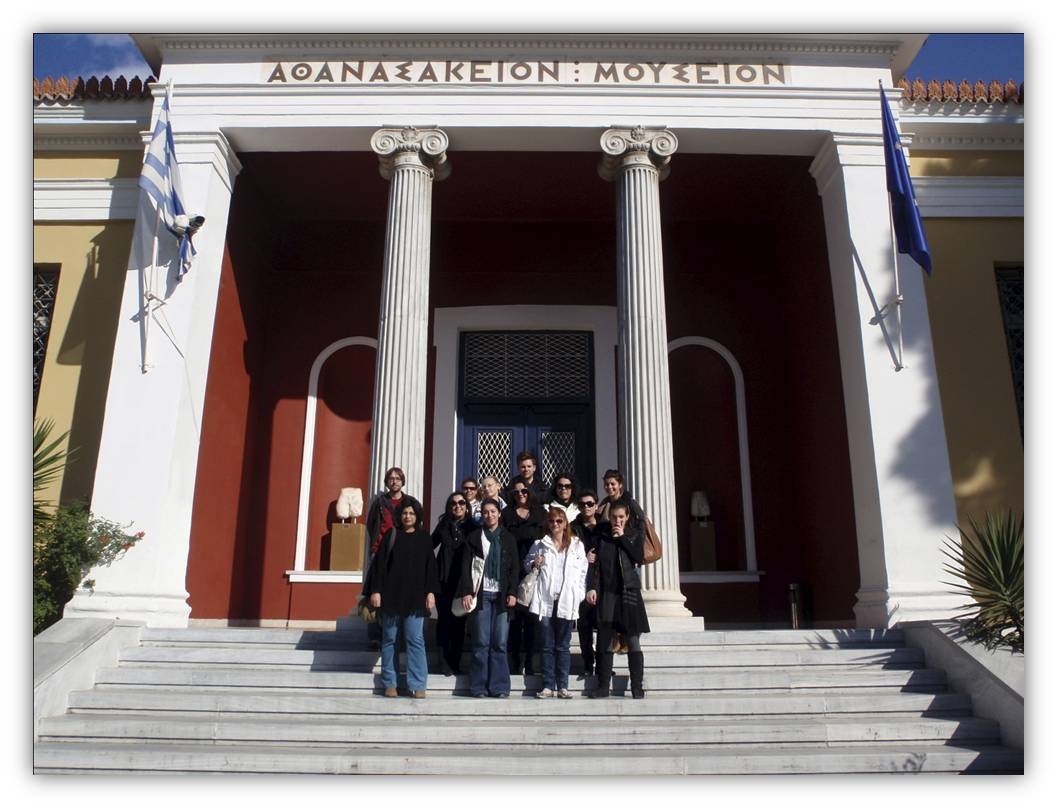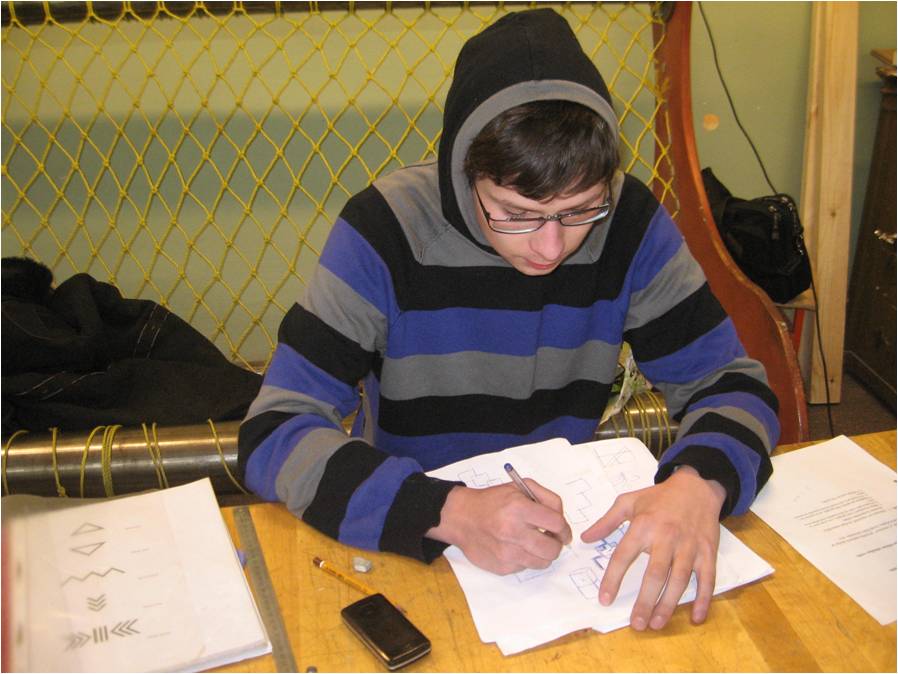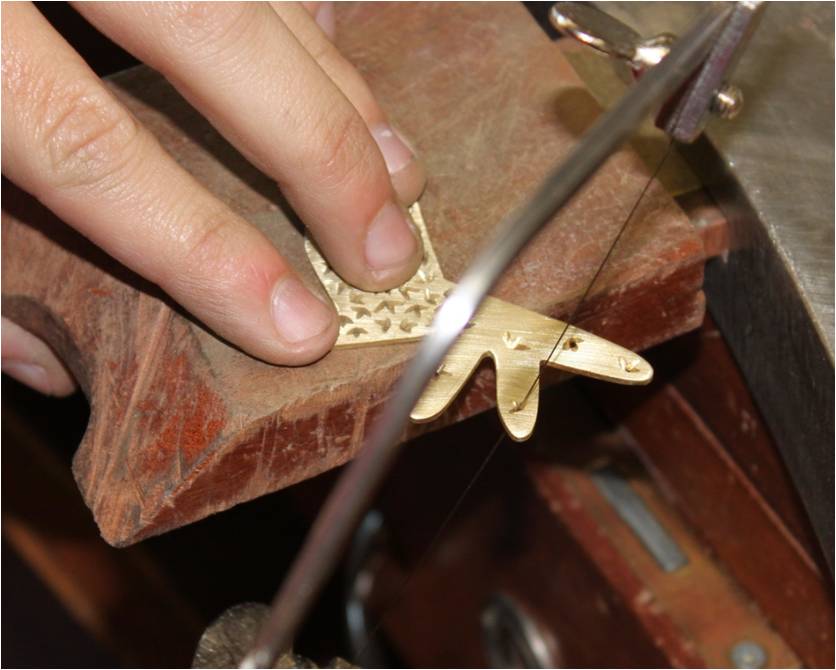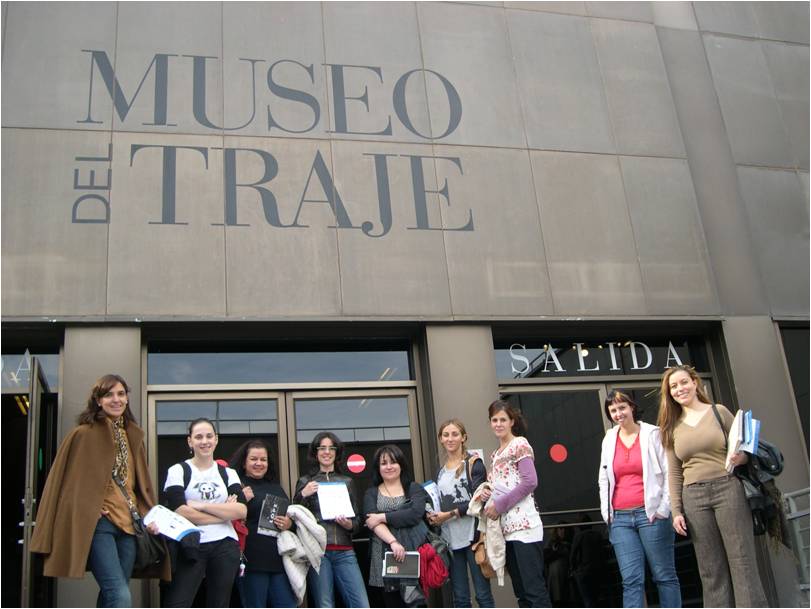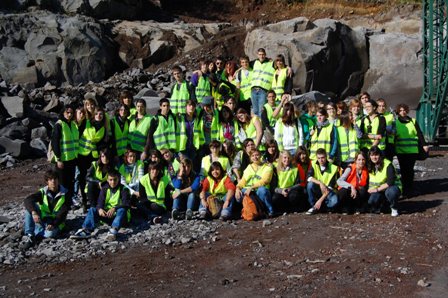bijoux européens 2011
Translate original post with Google Translate
RACONTE-MOI UN BIJOU !
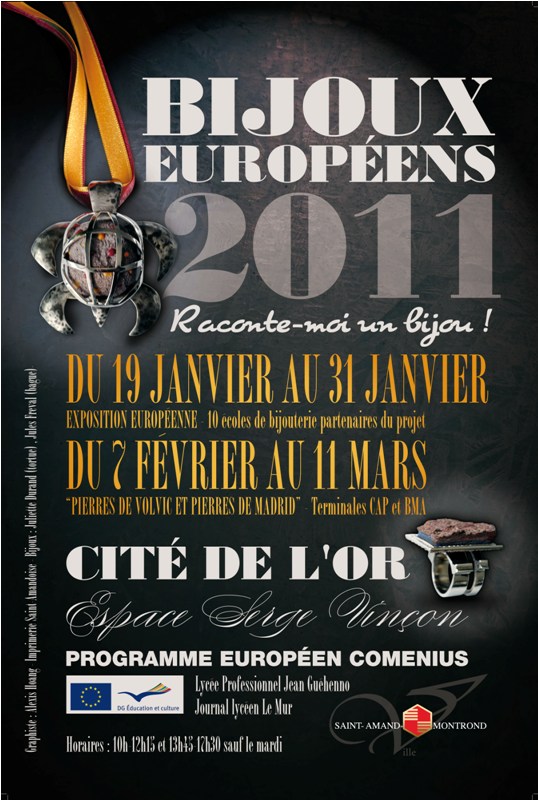
un nouveau programme européen Comenius
« Raconte-moi un bijou ! » comme on raconterait une histoire, et pourquoi pas l’histoire de ce bijou… Un projet comme une allégorie du Petit Prince de Saint-Exupéry qui fait appel aux rêves de l’enfance, aux apprentissages de l’adolescence, et à la transmission des connaissances tout au long de la vie… Le projet rassemble 10 écoles partenaires en Europe à travers leur champ professionnel commun (écoles de bijouterie) et leur volonté commune d’engager un maximum de lycéens dans une pédagogie de projet. Chaque école partenaire est elle-même intégrée dans un patrimoine local où se mêlent histoire du métier et traditions artisanales, où se retrouvent professionnels, entreprises, et artisans créateurs de bijoux, sollicités à travers ce projet à transmettre techniques, gestes séculaires et savoir-faire.
Première année du projet « Raconte-moi un bijou ! » soutenu par l’Union Européenne, à travers le programme Comenius… 10 écoles de bijouterie en Europe sont partenaires de ce projet et engagent leurs lycéens dans un travail européen pour provoquer des rencontres avec les professionnels et artisans du bijou, à travers la découverte des traditions artisanales, la création de bijoux contemporains en réinvestissant ces techniques, la rédaction et la diffusion de ces expériences dans le journal lycéen Le Mur, et une exposition collective itinérante européenne des bijoux créés.
L’exposition est itinérante à travers l’Europe pendant toute l’année 2011, et la première présentation a lieu au Musée de la Cité de l’Or de Saint-Amand Montrond. Les pièces seront ensuite exposées en Belgique (Namur, février), en Espagne (Madrid, mars), en Lettonie (Liépaja, avril), au Portugal (Porto, mai), en Belgique (Anvers, juin), en République tchèque (de juillet à septembre 2011), en Italie (Valenza, octobre), au Portugal (Lisbonne, novembre).
des techniques artisanales au bijou contemporain…
Pour la création de ces bijoux, les lycéens de chaque école ont appréhendé des apprentissages traditionnels de leur propre pays et se sont initiés à ces techniques artisanales. Les lycéens belges d’Anvers ont travaillé les techniques d’ argenterie en s’inspirant des pièces exposées au musée du château Sterckshof. L’école belge de Namur est allée découvrir les techniques artisanales de la dinanderie pour créer des pièces très contemporaines. En République Tchèque, l’école de Turnov présente une collection dont les bijoux se sont élaborés à partir de la taille des grenats de Bohême. Les lycéens grecs de l’école de Volos se sont inspirés des techniques de filigrane du musée archéologique de leur ville. Les Italiens de l’école Cellini à Valenza ont travaillé les techniques d’ emboutis , de la ciselure , de la gravure et du filigrane . En Lettonie, les lycéens de Liépaja ont découvert et utilisé d’anciennes techniques de découpage et de forgeage pour créer leur collection. Au Portugal, les lycéens de Lisbonne ont réinvesti les méthodes artisanales du métal repoussé et du filigrane , et l’école de Porto a utilisé les techniques traditionnelles de « lavradinho » et de « caseado » pour travailler le métal et constituer sa collection. Les lycéens espagnols de Madrid ont travaillé les anciennes techniques de filigrane , d’ émaillage et de damasquinage pour créer leurs bijoux. Quant aux lycéens français, ils sont allés en Auvergne prospecter des pierres de Volvic, puis ont appris à les tailler et à pratiquer l’ émaillage sur ces pierres volcaniques , pour construire leurs bijoux.
vernissage de l’exposition et journée Comenius
Le vernissage de la première exposition européenne se tient à la Cité de l’Or le 18 janvier 2011, à 18h en présence de délégués européens de plusieurs écoles partenaires du projet.
Axana Fouilloux, invitée d’honneur de l’exposition. Axana Fouilhoux, lycéenne au lycée professionnel Jean Guéhenno, elle participe à plusieurs projets avec le journal lycéen Le Mur et un stage en entreprise en Italie grâce à une bourse européenne Leonardo. Elle obtient son BMA, décide de poursuivre sa formation en gemmologie et aux techniques de lapidaire à Valenza, puis devient créatrice pour l’une des plus importantes entreprises de haute joaillerie italienne. Elle est aujourd’hui designer et maquettiste en haute joaillerie. Elle présente dans le cadre de ces journées Comenius auprès des lycéens bijoutiers de l’équipe française et des partenaires européens plusieurs interventions sur son parcours professionnel entre la France et l’Italie.
10 ECOLES DE BIJOUTERIE POUR UNE COLLECTION DE BIJOUX CONTEMPORAINS !
Belgium – Antwerp – SIHA. Stedelijk Instituut voor Handel en Ambachten
For our project we visited the Silver Museum in Antwerp, which has a large collection and a silversmith workshop at its disposal. The museum is located in castle Sterckshof, a house with many rooms and lots of space for silver. The silver collection covers a vast period of time from the 16th century until nowadays and is thematically organized with an emphasis on the techniques, brands, style and use of the objects in their original context. Thierry Decruyenaere, who teaches at our school, guided the students not only at school but also in the Sterckshof’s workshop. There the museum organizes silversmith classes for small groups, up to 6 attendants in order to optimize the work conditions.This was a very educational experience for our students.Belgium – Namur – IATA. Institut des Arts, Techniques et Artisanats.
In June, we met the jewelry and the general courses teachers to present them the theme “tell me a jewel” and to answer their questions. We explained to them that to create their jewels, the students had to draw inspiration from ancient craft techniques from their countries. For us it would be goldsmith and more particularly “dinanderie”. We also encouraged them to organize visits and trips for their students to nourish their inspiration and make them discover other techniques… In September, we met our jewelry students. We presented the PLE, the newspaper “Le Mur” and the new Comenius Project. We also told them about the calendar of events… On 29 October, a jewelry teacher organized a visit with his students in the museum of ancient arts in Namur, where they had the opportunity to admire beautiful goldsmith and “dinanderie” pieces, particularly those from the treasure of Hugo Oignies… On 2 December, the coordinators of the project met a craftsman who creates contemporary goldsmith. His name is Eric Seidoff. He is a former student from our school, where he mainly studied the fine arts. But he also spent some time in the departments of cabinetmaking and jewelry. For his creations and his jewels, he often uses semi-precious metals (copper, brass…) and also wood. We admired the nice collection of goldsmith tools in his workshop… In January, our students will visit Eric’s workshop, watch him work and listen to his explanations about his work. In February, Eric will come and watch our students work during their creation classes and will give them advice… And of course our students have been working on the creation and realization of their jewels since September… In February, we will host the Comenius exhibition in Namur from 10 th to the end of the month in the “Espace Wallonie de Namur”.
Czech republic – Turnov – SUPS. Střední Uměleckoprůmyslová Škola
Students from the Czech jewelery school of Turnov worked in relation with the Bohemian Paradise Geopark, localised 80 kilometers from Prague. They discovered and learned to work with the traditional techniques of garnets stones cutting and setting.Greece – Volos – DIEK. Municipal Vocational Training Institute of Volos
In the class of Jewellery Design the theme of the project “Tell me a Jewel” was given and the students were asked to use the “filigree” technique. According to the idea, our students would “say” (narrate) a short story through their jewel and present it in one -two pages in the form of a card.On October 12th we visited the Archaeological Museum of Volos and we admired extra -ordinary samples of the technique from the Hellenistic Period (1st – 3rd century B.C.), that were made in our area. On October 15th a seminar for the filigree technique was carried out by a well -known craftsman of our area. A pleasant surprise for us was the fashion design exhibition of a Roumanian artist, which we watched with the students on October! There were special works made with the filigree technique !! On October the 25th the students’ designs were completed. Their making started in the workshops of DIEK immediately.Italy – Valenza – ISA Cellini. Istituto d’Arte Benvenuto Cellini
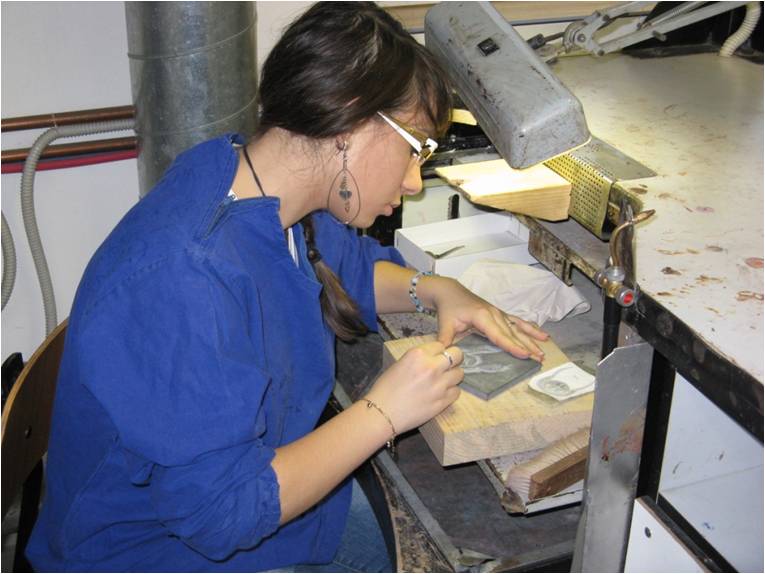
Latvia – Liepaja – LMV. Liepājas Mākslas Vidusskola
Decorated with traditional techniques… As raw materials using traditional techniques, we were looking for Latvian archaeological materials in jewelry. As a reference for studying literature and original archaeological jewelry and made there of. Analyzing the reference material we came to the conclusion that one of the unifying elements of the ornaments are signs and symbols. Most of the jewelry was the case or forged. How we view ourselves set a study of ornamentation and sign making techniques. Signs and decorated with ornaments can be divided into : the plate and ornaments in a positive, the plate and ornaments in negative, the plate and ornaments in silhouette… Sign making techniques : Marks cutting, sawing, Marks Forging… Jewelry design, composition work in three directions : Jewelry for the initiative back to the traditional sources, archaeological jewelry, using traditional techniques, and jewelry for a source of inspiration is free, but using traditional techniques.Portugal – Lisboa – ESAA. Escola Secundaria Antonio Arroio
